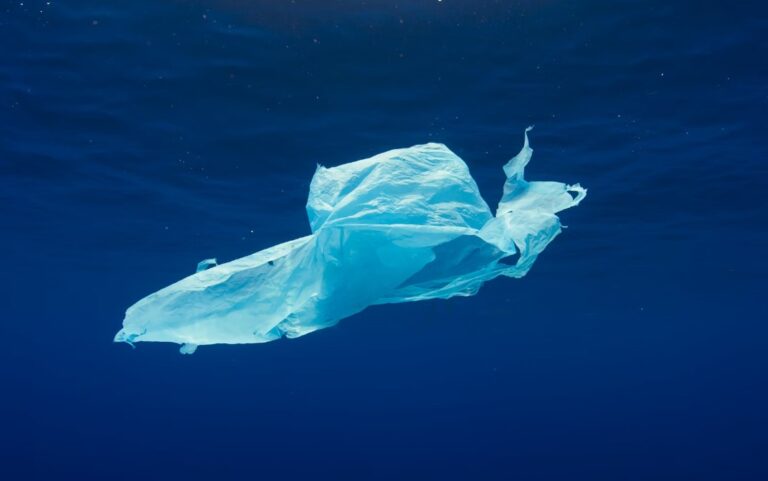The ocean, which make up more than 70% of the Earth’s surface, are incredibly important ecosystems home to a wide variety of marine life. They are, however, increasingly threatened by human-caused pollution, particularly plastic pollution.
There is no denying that plastic has improved our quality of life. Our beloved turtles, whales, and other marine species are being strangled to death by the shocking quantities of single-use plastic that are currently making their way into the ocean.
In this article, we will look into eight of the most dangerous items found in the ocean, shedding light on their harmful effects.
Table of Contents
The 8 most dangerous items found in the ocean
1. Disposable plastic cups, plates, and bowls
At picnics and other outdoor gatherings, it is common practice to use disposable plastic cups, plates, and bowls. Their single-use nature, however, makes them a significant source of marine debris.
Contrary to popular belief, they are rarely reused. Unfortunately, their irregular shape makes recycling centres unable to process them even if they make it into the bin.
These materials are easily blown into rivers, causing harm and death to marine species that ingest or become entangled in them.
2. Plastic straws and drink stirrers
Straws and stirrers made of plastic are quite inconspicuous but have significant adverse effects. Even though they may only be utilized for a short period of time, single-use goods have been found to remain in the environment for centuries.
Straws are readily blown away and carried to streams, where they eventually make their way to the sea. When they become lodged in nasal passages or the airways, they can cause major damage or even death.
3. Plastic fruit and vegetable bags
The thin plastic bags used to package fruits and vegetables are a dangerous addition to the waste that ends up in the ocean. These sacks are often quite light and can be blown into bodies of water.
As a result, whales and other large mammals may mistake them for food and ingest them. They can also become tangled up with other things and form potentially deadly obstructions.
4. Plastic cutlery
While it is handy to use disposable plastic cutlery for picnics and takeout, it is also one of the most lethal polymers for marine species like sea turtles and birds.
These plastics can cause serious injuries since they are sharp, often polluted, and frequently found in rivers. Animals like seabirds and turtles that ingest these particles of plastic suffer from internal damage and poisoning.
Microplastics, an even smaller and more toxic form of plastic, can be produced during this breakdown and are then consumed by fish and other marine organisms. In the end, this contamination makes its way into the food supply, causing health concerns to humans.
5. Plastic takeaway containers
Pollution of the water is exacerbated by the inappropriate disposal of plastic takeout containers, which are frequently used for restaurant leftovers. Potentially hazardous substances stored in these containers could leak into the ocean, contribute to the formation of large floating waste patches, and eventually wash up on remote beaches.
Plastic takeout containers are brittle and easily broken into sharp bits that can cause internal damage in wildlife if consumed. Marine life can get caught in the holes that form in plastic containers over time.
They can withstand the elements for long periods of time and are therefore quite resilient.
Read also: Great Pacific Garbage Patch, what is it and the solutions to treat it
6. Polystyrene containers and products
Polystyrene containers and products, commonly known as Styrofoam, are notable for their durability in the environment. It is hard to recycle because it does not break down naturally.
Products made from expanded polystyrene, which are around 95% air, can be carried great distances by air or water.
Due to their fragile composition, they disintegrate easily when exposed to sunlight, releasing toxic compounds. These particles can be mistaken for food by birds, fish, and mammals, leading to fatal poisoning.
7. Abandoned fishing gear
Discarded fishing nets, commonly known as “ghost gear,” are another dangerous form of ocean plastic, but they are not something you use every day and so cannot be avoided.
Gillnets, trawl nets, and crab pots that have been lost or abandoned in the water are extremely dangerous because of the wildlife they are designed to capture and kill.
This hazardous material floats for years without breaking down and is thought to account for as much as 10% of all ocean plastic.
8. Plastic shopping Bags
Both lightweight and heavyweight plastic grocery bags are a serious problem for marine life. Wind and currents can readily carry them, and they end up in the ocean.
Seabirds, turtles, and other small animals all perish after becoming trapped in fishing nets. Jellyfish are a favourite diet of turtles, thus they misidentify them as such. Ingesting these pliable plastics causes intestinal blockage, starvation, and eventual death.
The solution to plastic pollution
The predominance of these eight dangerous items found in the ocean emphasizes the critical importance of responsible consumption and waste management. Everyone has the ability to make oceans that are healthy and teeming with life.
To lessen the negative effects on marine life and the ecosystem, we must reduce our reliance on single-use plastics and advocate for their recycling and proper disposal.
Together, we can ensure that the seas and the life they support remain healthy for decades to come.
Read also: Want to save the planet? Say goodbye to these 20 items












